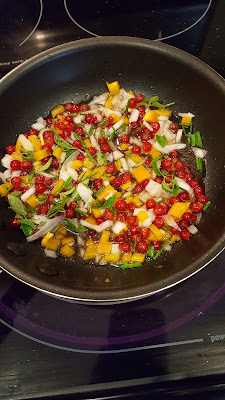First Growths (2 wineries): Cayuse, and K Vintners. And I can't think of any other winery that is making wines at this level, unless perhaps it's Buty.
Super-Second Growths (4 wineries): Buty (the best of the Super-Seconds), Quilceda Creek (tempted to drop them to a 2nd, as it seems only Parker raves about their wines, whose flavors are just too black, too over-extracted, for me, and I've heard they perform poorly on the resale market so they can't be a cult winery, but they are skilled winemakers; if they only changed their flavor profile they could be great), Barnard Griffin (for whites and roses only, and this is NOT a mistaken ranking), Pepper Bridge,
Second Growths (12 wineries): L'Ecole No. 41, Cougar Crest, Seven Hills, Tamarack, Five Star (might deserve Super Second), Zerba, Saviah, Abeja, Charles Smith Wines. Owen Roe, Tyrus Evan, Fidelitas
Third Growths (14 wineries): Leonetti (used to be a cult winery, but it belongs here now), Woodward Canyon, Kiona, Terra Blanca, Maryhill (Proprietor Reserve wines), Walla Walla Vintners, Gramercy, Ch. St Michelle, Columbia Crest, Gouger, Novelty Hill, Syzygy, Reininger, Dunham
Fourth Growth (13 wineries): Maryhill (regular label wines), Adamant, Beresan, Canoe Ridge, Northstar, Col Solare, Hogue, Syncline, Barnard Griffin (for reds only), Jacob Williams, Three Rivers, Cascade Cliffs, Spring Valley, Olequah.
Fifth Growths (4 wineries): Basel (they have fallen in wine quality-I suspect they are focusing on making money by renting out their many gorgeous rooms for weddings, and then selling wines primarily to their guests who probably don't know much about wine--and they have become unfriendly to the wine trade, but they are in one of the coolest winery buildings in the state), Sleight of Hand, 14 Hands, Cor,
Table wines (some of their wines would be fine with dinner, even though not remarkable, but some of the wines from some of these wineries were bad when I tasted them: Isenhower, Forgeron, Glen Fiona, Blackwood Canyon. Tefft, Waving Tree,
Notes:
1. Notice that the distribution is funky; there should be more wineries in each lower ranking, and yet most are in the top three. This may be because the average quality around Walla Walla is so high.
2. This list is based on my perception of winery quality; others' lists would of course be different.
3. As in Bordeaux, even a Fifth Growth winery can make a fantastic wine, if fruit and winery decisions come together happily.
4. It is very difficult to make a great wine. It is no disgrace not to make them.
5. My ranking is based on my perception of a winery's average quality across its entire lineup--so if they make two great wines and twenty below-par wines, they don't rank very high. (This describes a number of wineries, like Three Rivers.)
6. No one I know has visited every winery, and thus if a winery is not named here, it might well deserve to be ranked, However, it seems likely to me that many of the wineries not ranked above would probably be listed as table wines. And there is nothing wrong with table wines. The rest could be ranked, probably, in the 3rd-5th ranks.
7. Even if you think this ranking is ridiculous, I nevertheless think it is helpful to give consumers, who want to choose a wine from Washington, or to pick some wineries to visit, an idea about general winery quality, because if they rely only upon advertising, or a pretty building, or a charismatic pourer, or favorable yelp reviews, they are unlikely to find most of the best places. My purpose in attempting a ranking is to help people see past the million-dollar buildings, past the artful guile of the marketing campaigns, and straight through to the wines themselves.






